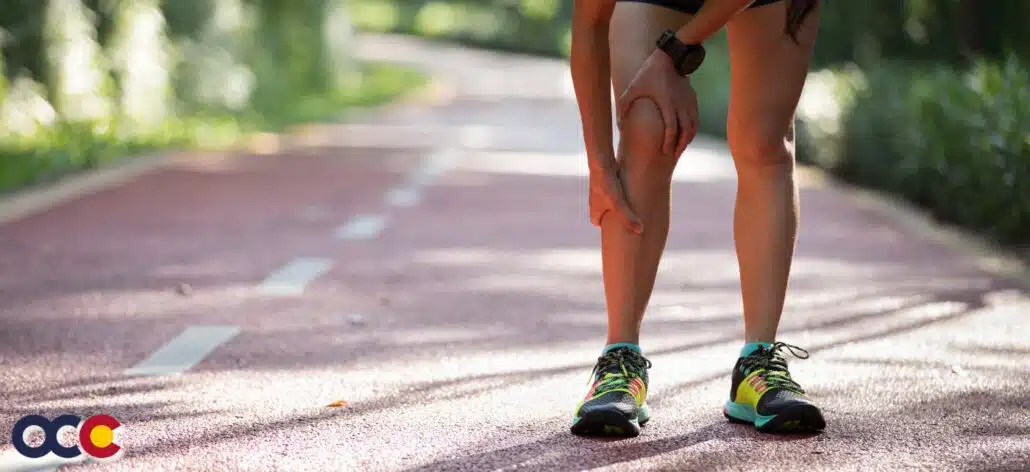Hip, Knee & Leg Disorders
Hip
The hip is one of the largest weight-bearing joints in the body. When it’s working properly, it lets you walk, sit, bend, and turn without pain. Unlike the shoulder, the hip sacrifices degree of movement for additional stability. To keep it moving smoothly, a complex network of bones, cartilage, muscles, ligaments, and tendons must all work in harmony.
The hip is a ball-and-socket joint where the head of the femur articulates with the cuplike acetabulum of the pelvic bone. The acetabulum fits tightly around the head of the femur. The ball is normally held in the socket by very powerful ligaments that form a complete sleeve around the joint (the joint capsule). The capsule has a delicate lining (the synovium). The head of the femur is covered with a layer of smooth cartilage which is a fairly soft, white substance. The socket is also lined with cartilage. This cartilage cushions the joint, and allows the bones to move on each other with very little friction.
An x-ray of the hip joint usually shows a “space” between the ball and the socket because the cartilage does not show up on x-rays. In the normal hip this “joint space” is approximately 1/4 inch wide and fairly even in outline.
Knee
The knee joint, which appears like a simple hinge-joint, is one of the most complex joints in the body.
The knee joint is made up of the femur (thigh bone), tibia (lower leg bone), and patella (the kneecap). All these bones are lined with articular cartilage (surface cartilage). This articular cartilage acts like a shock absorber and allows a smooth, low friction surface for the knee to move on. Between the tibia and femur lie two floating cartilages called menisci. The medial (inner) meniscus and the lateral (outer) meniscus rest on the tibial surface cartilage and are mobile. The menisci also act as shock absorbers and stabilizers. The knee is stabilized by ligaments that are both inside and outside the joint. The medial and lateral collateral ligaments support the knee from excessive side-to-side movement. The (internal) anterior and posterior cruciate ligaments support the knee from buckling and giving way. The knee joint is surrounded by a capsule (envelope) that produces a small amount of synovial (lubricating) fluid to help with smooth motion. Thigh muscles are important secondary knee stabilizers.
We tend to ignore our knees until something happens to them that causes pain. If we take good care of our knees now, before there is a problem, we can really help ourselves. In addition, if some problems with the knees develop, an exercise program can be extremely beneficial. To understand the functions, conditions, surgeries & procedures of the knee better, we have included an interactive animated presentation.
Leg
Your legs are made up of bones, blood vessels, muscles and other connective tissue. They are important for motion and standing. Playing sports, running, falling or having an accident can damage your legs. Common leg injuries include sprains and strains, dislocations, and fractures.
These injuries can affect the entire leg, or just the foot, ankle, knee, or hip. Certain diseases also lead to leg problems. For example, knee osteoarthritis, common in older people, can cause pain and limited motion. Problems in your veins in your legs can lead to varicose veins or deep vein thrombosis.
The highly qualified orthopedic surgeons and physiatrists at Advanced Orthopedic & Sports Medicine specialize in the evaluation, diagnosis and treatment of hip, knee and leg disorders. Our physicians have expertise in non-surgical care using conservative comprehensive care such as physical therapy, interventional care, and injections. If surgery is necessary, our board certified surgeons have advanced training in hip, knee and leg procedures.
Our Centers Of Excellence:
Click on the topics below to find out more from the Orthopaedic connection website of American Academy of Orthopaedic Surgeons.
Broken Bones, Fractures and Injury
- Distal Femur (Thighbone) Fractures of the Knee
- Femur Shaft Fractures (Broken Thighbone)
- Fractures of the Proximal Tibia
- Growth Plate Fractures
- Hip Fractures
- Hip Dislocation
- Hip Strains
- Hamstring Muscle Strain
- Muscle Strains in the Thigh
- Pediatric Thighbone (Femur) Fracture
- Pelvis Fractures
- Stress Fractures
- Tibia (Shinbone) Shaft Fractures
Diseases and Syndromes
- Bowed Legs
- Burning Thigh Pain (Meralgia paresthetica)
- Developmental Dislocation (Dysplasia) of the Hip
- Discoid Meniscus
- Femoroacetabular Impingement (FAI)
- Hip Bursitis
- Inflammatory Arthritis of the Hip
- Knee Tendon Bursitis
- Kneecap (Prepatellar) Bursitis
- Limb Length Discrepancy
- Osteoarthritis of the Hip
- Osteonecrosis of the Hip
- Osteonecrosis of the Knee
- Perthes Disease
- Slipped Capital Femoral Epiphysis
- Snapping Hip
- Transient Osteoporosis of the Hip
Arthroscopy and Reconstruction
Tears and Instability
- Anterior Cruciate Ligament (ACL) Injuries
- Collateral Ligament Injuries
- Combined Knee Ligament Injuries
- Meniscal Tear
- Patellar Tendon Tear
- Posterior Cruciate Ligament (PCL) Tear
- Quadriceps Tendon Tear
- Unstable Kneecap
Pain Syndromes
- Adolescent Anterior Knee Pain
- Arthritis of the Knee
- Burning Thigh Pain (Meralgia paresthetica)
- Compartment Syndrome
- Osgood-Schlatter Disease (Knee Pain)
- Runner’s Knee (Patellofemoral Pain)
- Shin Splints
Treatment and Joint Replacement
- Meniscus Tear Treatment Options
- Cemented and Cementless Knee Replacement
- Hip Arthroscopy
- Hip Resurfacing
Joint Replacement
- Knee Replacement Implants
- Minimally Invasive Total Hip Replacement
- Minimally Invasive Total Knee Replacement
- Osteotomy of the Knee
- Total Hip Replacement
- Total Knee Replacement
- Unicompartmental Knee Replacement
Nonsurgical Treatment
HIp & Knee Specialists
Hip & Knee Articles

Shin Splints
Shin splints are a common exercise-related problem caused by repetitive stress on the shinbone and the connective tissues that attach the muscles to the bone.

Hip Strain
Hip sprains can cause intense pain that can impact your daily activities and overall quality of life. It can limit your movements, preventing you from

Prepatellar Kneecap Bursitis
There is a good reason why prepatellar kneecap bursitis warrants an immediate medical evaluation and treatment by an experienced orthopedic doctor like those you’ll find

Do you have knee pain? Watch for common knee injuries
If knee pain is keeping you from being active, it’s a good idea to have an orthopedic specialist examine your knee to determine if you











